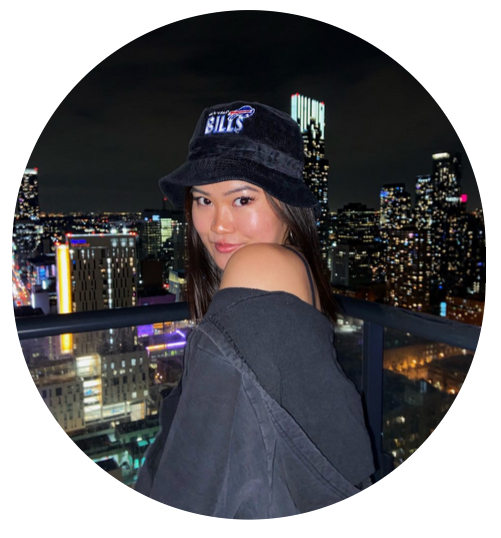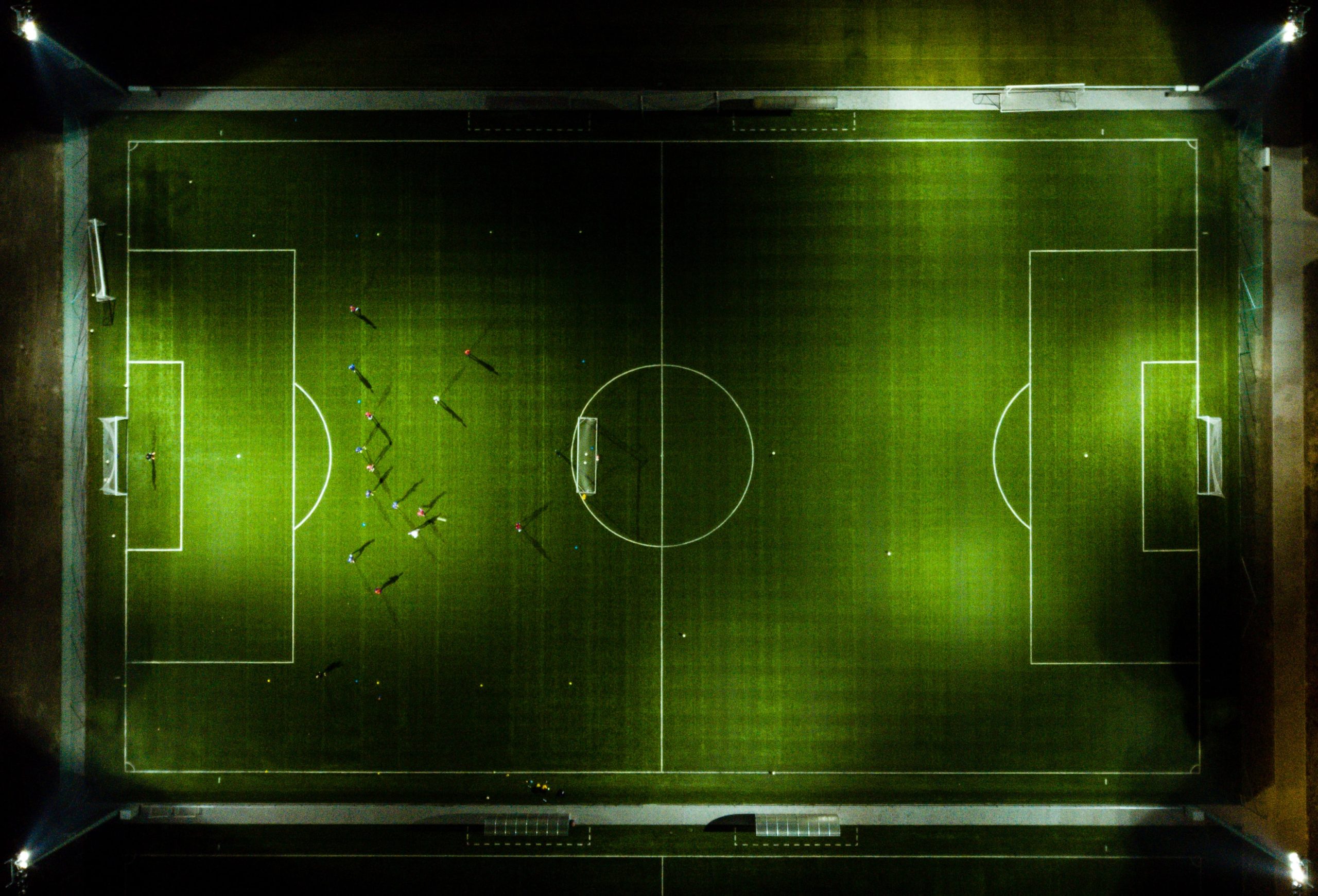Growing up, I was a competitive dancer. I loved it — from the pink tights, ballet bun and barre exercises, to the beauty of the choreography and spending time with my team. My favourite part was training. I enjoyed watching myself progress as a dancer and seeing the hours of practice pay off when I’d finally get the petit allegro right or complete a turn combo. The harder I worked, the better I got. When I’d win at a competition, it was because I’d earned it.
I applied this mindset to all areas of my life, whether the goal was athletic or academic, and it usually worked. If I wanted something badly enough, I was able to achieve it. Nothing was impossible if I worked hard enough.
But later, one summer in high school, while working at the pool, I told my 24-year-old coworker that I wanted to be a sports journalist.
She laughed in my face. “I hope you like being a lifeguard,” she said, “That’s a white man’s industry.”
I was 16, and still felt like the only thing that could hold me back from anything I ever wanted was myself. So I just shrugged and told her that I was pretty confident in my abilities. As a third-generation Canadian woman of Asian descent, I never considered that something I couldn’t control, like my gender or my race, would have any impact on the way I would be treated throughout my professional life.
I’m 19 now and in my second year at Ryerson University, studying journalism. Looking back on it, while I don’t regret my response to my coworker. She was only the first of many people to say something disparaging about my career choice.
Their intentions were usually pure. Some would smile and nod as soon as I mentioned sports journalism. The Maple Leaf Sports and Entertainment executives that I served once at Boston Pizza told me to never give up. The frat boys that I partied with over a weekend and then ran into while covering the Leafs home opener told me I would do really well in lifestyle or entertainment journalism, because I was “cute with a cheery voice.”
“I can see you on Breakfast Television,” my mother had said to me one morning before school, while I was eating breakfast at the kitchen table. “You could be like Melanie Ng.”
“Or I could be like Hazel Mae on Sportsnet,” I replied, before heading out the door.
Other people were more blunt with their opinions on my career. They would tell me I would have a really hard time finding a job, and that if I did get hired, I would be sexualized and fetishized as an Asian woman. I didn’t believe them until one month into my first year of university, when an upper-year editor asked me to cover a major hockey game with him.
I was bright-eyed and eager to start reporting for campus news, so I was proud of myself for landing the story. At the event, we shot a few stand-ups and interviewed the crowd. I let him buy me a beer. He then spent the rest of the night telling me about his “weakness for petite Asian girls,” and asking if the beds in my residence buildings were big and if my roommates were home.
“I’d love to see your room,” he said. I offered up a polite smile.
I had a weird feeling in my stomach when I returned to my dorm that night, alone. What was the likelihood that I, a first year only a few weeks into the program among plenty of other more knowledgeable and experienced volunteers, had been chosen to cover an event like this based purely on my writing ability?
For the first time in my life, I doubted myself. I questioned whether someone like me would be able to achieve a career in sports reporting, and the discomfort I might have to put up with to get there.
Breaking through the glass ceiling into sports journalism as a woman of colour means fighting against the systemic oppression and barriers that are still very much in place.
According to a 2017 study by the Women’s Media Centre, 89 per cent of sports coverage from major news outlets in America is done by male journalists, while 11 per cent is done by women. In Canada, those numbers aren’t much better.
“It’s lonely for women of colour to be in the sports industry. To my knowledge, there are only two Black women in Canada in full-time work on-air in sports and that’s Kayla Grey and I,” said Savanna Hamilton, the Toronto Raptors “Raptors Today” host and MLSE producer. “We’re happy to be trailblazing but it’s useless if we can’t bring anyone else up with us.”
Hamilton and I can both count the number of racialized women sports journalists we know on television on our fingers, on one hand. I’ve made it a point to memorize their names. The list is not long.
Another issue I often worry about is how much support diverse hires get, once they’ve finally made it into the newsroom. When media organizations hire a racialized woman, is it because she produces good work, or because her “ethnic” last name looks good for them on paper?
And is she given the backing and training she needs to set herself up for success? Will she have the opportunity to move up in the company, where she could one day sit in a position of power, or is she just a pretty face on television to keep ratings up? Does she truly have a seat at the table if she is still being regarded as and treated differently from her colleagues?
“I respect and appreciate representation. I also think it’s important to not just hire someone because of their background or gender,” said Alyssa Morrison, a second-year sport media student at Ryerson University.
Morrison is a mixed-race Asian-American woman, and to her, sport media should be “an environment filled with people who work hard, regardless of race or gender.”
As women of colour aspiring to work in sports journalism, we want to be hired for a position because we deserve it. Furthermore, should we be given the position and fulfill it to the fullest degree, we want to be given the same chances at career advancement as any of our white, male colleagues.
We do not want to be hired simply to check off the diversity box on the company’s to-do list.
Still, change doesn’t happen overnight, and maybe we should be celebrating the fact that there is now a to-do list at all in Canadian sports media.
Hamilton says she’s been noticing significant progress within her workplace as well. It began more recently, after diverse representation started increasing in decision-making positions.
“Because of these diversity leaders that have been put in place, these conversations are happening now, period,” she said.
Kasumi Kobo, another second-year sport media student at Ryerson, believes the future of sport media is reflected in the people in her program.
“I’m pleasantly surprised about the gender and racial diversity in RTA sport media, and our program recognizes it. We’re able to have sensitive discussions about social injustices in the industry,” Kobo said.
While sport media still has a long way to go, the push to diversify the newsroom and grapple with the impacts of systemic racism has never been stronger than it is today.
I don’t know if I’ll find success in the industry, but I know I have to try. I look forward to the day when we can shatter these glass ceilings, and everyone can finally be on the same side: a side that allows for equal opportunity for all races and genders, but continues to support those who have been marginalized in the past and sets them up for success. I look forward to the day when I can accomplish my goals because I worked hard for them. It’ll be the day I stop counting fingers. It’ll be the day I stop memorizing names. I’ll have become one instead.

Christina Flores-Chan is a journalism student at Ryerson University based in downtown Toronto. Currently, she hosts and produces Stretch Five Sports at CJRU 1280AM radio, and writes for the Intermission Sports and Her Campus.
You can reach Christina at @christina.fc on Instagram or @chrstnafc on Twitter.

